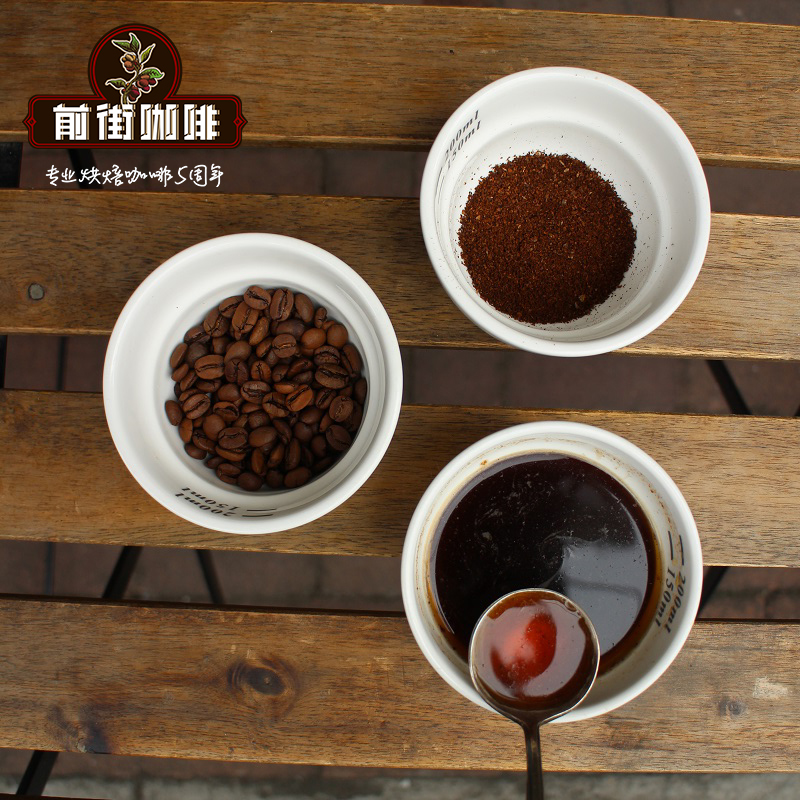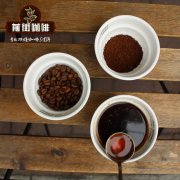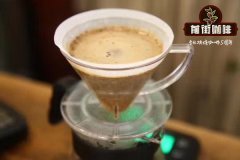What are the taste and flavor features of the cheetah project Finca La Bolsa in Polsa, Guatemala?
What are the taste and flavor features of the Finca La Bolsa cheetah project in Polsa, Guatemala?

Taste: juicy, sweet and full-bodied, suitable for espresso and filtered coffee.
In this coffee, we like the thick syrup body, as well as milk chocolate, juicy red grapes, green apples and cherries. A great generalist, perfect for coffee and filter brewing.
Finca La Bolsa is located between two mountains with rich limestone soil and stable moist microclimate. The farm has a large area to promote biodiversity, and these bourbon and Katula coffee beans grow in the shade of native Inga trees.
100% Arabica. Wash thoroughly. Rainforest Alliance certification.
Guatemala: Jesuit missionaries are most likely to introduce coffee to Guatemala, where coffee was grown as early as the mid-18th century. Nevertheless, coffee only became an important export crop in the mid-19th century. Today, an estimated 125000 coffee producers drive Guatemala's coffee industry, which is one of Guatemala's main exports, accounting for 40 per cent of all agricultural export earnings.
Today, coffee is grown in 20% of the 22 sectors in Guatemala, surrounded by 270000 hectares of coffee, almost all of which (98%) is grown in the shade. The country's production is almost entirely Arabica coffee and is prepared by the most commonly used washing methods, although natural and various semi-washing methods are becoming increasingly popular. Guatemala benefits from high elevations and up to 300 unique microclimates. Most areas have continuous rainfall and are rich in minerals, and the country's reputation as a specialty coffee producer is no less than that of stars.
Finca La Bolsa was acquired by the distinguished medical expert Jorge Vides in 1958. Before that, the land was not used for coffee production. Jorge won an award for his coffee production and service to the Huehuetenango area, and the main hospital in the coffee growing community was named after him. La Bolsa participated in the 2002 Excellence Cup and won the second place with a score of 94.98. Finca La Bolsa sits between two mountains and provides a very stable, humid microclimate. This combined with limestone-rich soil gives the coffee a very unique profile-rich syrup and plenty of malic acid and citric acid. After harvest, the coffee is fermented for 18 to 24 hours, then the mucus is washed, graded in the channel and soaked overnight.
Finca La Bolsa is certified by the Rainforest Alliance and follows CAFE guidelines. Coffee Care funded the construction of a school and nursery on the farm with trained full-time teachers. All temporary and long-term staff can educate their children and leave their children in school or nurseries by donating food. When children go to school or kindergarten for five days in a row, they receive rice, beans and corn every week. Before the implementation of this food rationing plan, it was difficult for people to leave their children in the care of others, and education was not necessarily very important because the pressure to earn money to support their families was greater. As a result, schools and nurseries are full for children who do not work on the farm. Accommodation for permanent and temporary workers and separate facilities for men
Part of the farm is a reserved area to promote biodiversity and reduce wind and soil erosion. Inga trees are used to create shadows for coffee and fix nitrogen in the soil, which is essential for the growth of plants and cherries. The farm also has an expanded composting operation to make use of waste using red worms.
Arabica Coffee varieties:
Bourbon-this grape variety originated on the island of Bourbon, now known as Reunion, and is a variety of early Ethiopian Arabica coffee. It has medium yield, broad leaves, and cherries can ripen in red, yellow or orange.
Catula-is a Brazilian variety and a variety of bourbon coffee beans. This kind of coffee tree is not as tall as the original bourbon coffee tree, and its typical characteristics are bright acidity and medium height.
Important Notice :
前街咖啡 FrontStreet Coffee has moved to new addredd:
FrontStreet Coffee Address: 315,Donghua East Road,GuangZhou
Tel:020 38364473
- Prev

What are the taste characteristics of Guatemala Polsa? Planting stories and history cooking sharing
What are the taste characteristics of Guatemala Polsa? Planting stories and history? La Bolsa is a manor in Huehuetenango La Libertad and is famous for its quality year after year. It was founded by Dr. Jorge Vides. Dr. Jorge Vides is a doctor in Huehuetenango National Hospital. After 30 years of dedicated service, the hospital is named after him. one
- Next

Guatemala Coffee La Minita Coffee introduction
For more information on coffee beans, please follow the coffee workshop (Wechat official account cafe_style) there are seven main coffee producing areas in Guatemala: Antigua, Coban, Atitlan, Huehuetenango, Fraijanes, Oriente, and San Mareos.
Related
- Detailed explanation of Jadeite planting Land in Panamanian Jadeite Manor introduction to the grading system of Jadeite competitive bidding, Red bid, Green bid and Rose Summer
- Story of Coffee planting in Brenka region of Costa Rica Stonehenge Manor anaerobic heavy honey treatment of flavor mouth
- What's on the barrel of Blue Mountain Coffee beans?
- Can American coffee also pull flowers? How to use hot American style to pull out a good-looking pattern?
- Can you make a cold extract with coffee beans? What is the right proportion for cold-extracted coffee formula?
- Indonesian PWN Gold Mandrine Coffee Origin Features Flavor How to Chong? Mandolin coffee is American.
- A brief introduction to the flavor characteristics of Brazilian yellow bourbon coffee beans
- What is the effect of different water quality on the flavor of cold-extracted coffee? What kind of water is best for brewing coffee?
- Why do you think of Rose Summer whenever you mention Panamanian coffee?
- Introduction to the characteristics of authentic blue mountain coffee bean producing areas? What is the CIB Coffee Authority in Jamaica?

